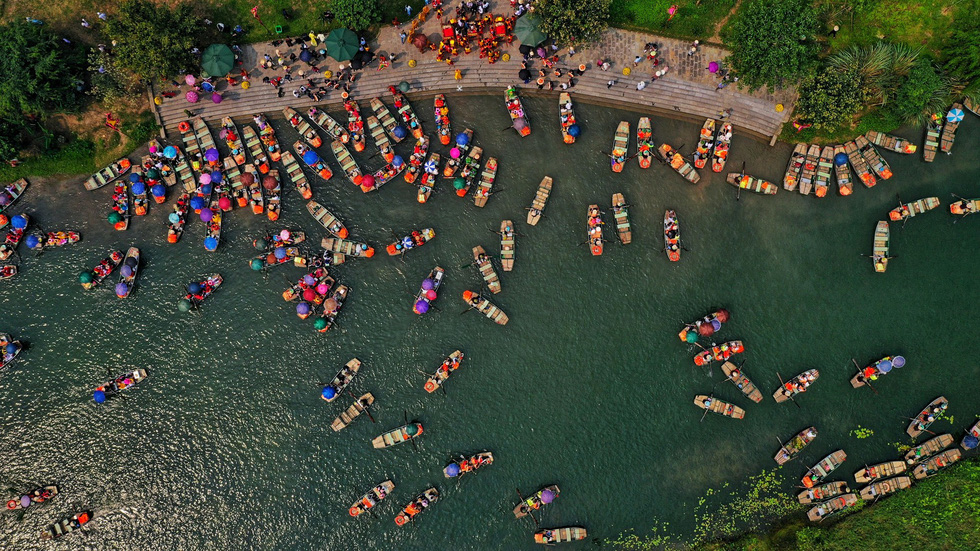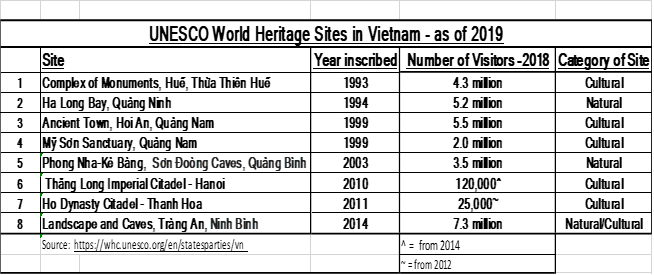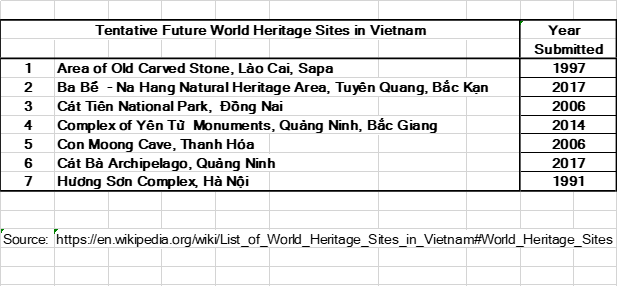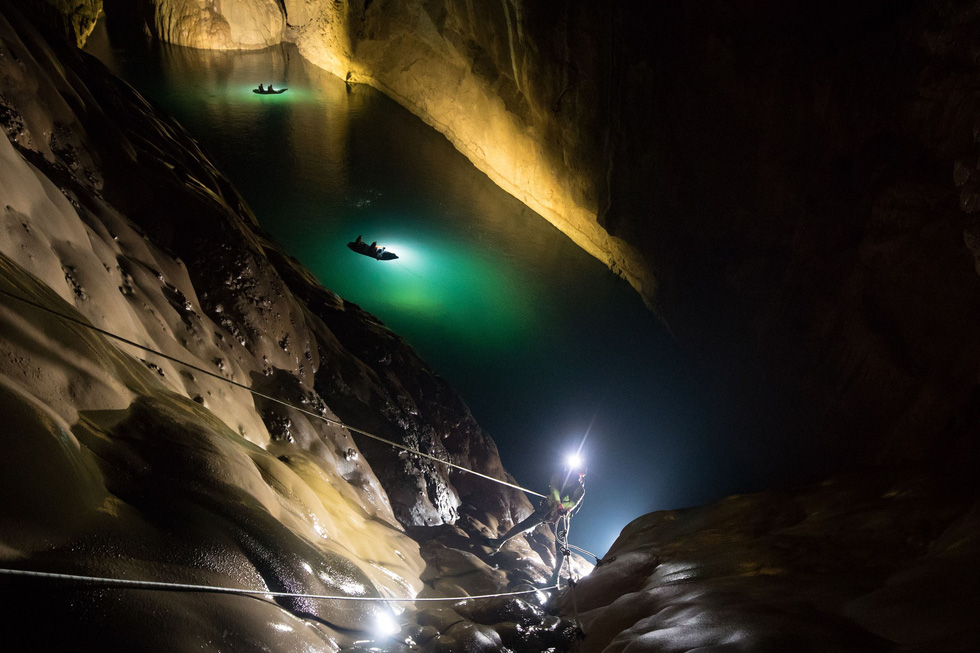These days we hear a lot about the main cities and beach destinations in Vietnam. Let’s gain a different perspective by reviewing the eight UNESCO World Heritage Sites and see how tourism is evolving, then look at potential future sites already proposed to UNESCO.
|
|
Ha Long Bay, Hoi An, and Hue already enjoy worldwide popularity with each destination attracting several million visitors per year, with the My Son Sanctuary not far behind, and most of us are quite familiar with those destinations.
The Hue Complex of Monuments was the original World Heritage Site in Vietnam, recognized by UNESCO in 1993. The complex is highlighted by the Citadel, a two-square-kilometer enclosure ringed by a moat. Inside the Citadel is the Imperial City, which in turn houses the Purple Forbidden City, accessible only to the Imperial Family during the era that Hue was the national capital from 1802 to 1945.
The complex is well preserved, maintained, well laid-out, and symmetrical at every juncture.
Ha Long Bay covers over 1,500 square kilometers consisting of some 2,000 limestone islands and islets featuring breathtaking steep cliffs, thus one of the most original and awe-inspiring destinations in the world. Ha Long has been a tourist destination for well over 100 years and a UNESCO World Heritage Site since 1994.
Also noteworthy are Cat Ba Island, the largest and most developed island in Ha Long Bay, and Bai Tu Long Bay which lies to the east of Ha Long, smaller but equally gorgeous. Cat Ba has been proposed as a UNESCO World Heritage Site on its own merit (more below).
Situated to the southeast of Ha Long is Lan Ha Bay, a group of about 400 limestone islands located in Hai Phong City, which also has some mostly undeveloped yet pristine beaches.
Hoi An Ancient Town has moved center stage among tourist destinations in Vietnam and the world, having been recently named as one of the top 20 worldwide destinations by several global travel and leisure publications.
The city was originally founded during the Champa era as a key spice trading port. Much activity was focused on the 15th to the 18th centuries with Chinese, Japanese, and other traders, with French influences also impacting the architecture and layout of the city during the French colonial era. The ancient town is well-preserved, featuring canals and the iconic Japanese Bridge.
The My Son Sanctuary is a cluster of Hindu temples from the Champa era constructed between 500 and 1,500 years ago, reminiscent of Angkor Wat in Cambodia but on a much smaller scale.
My Son enjoys an advantageous location within an hour from three popular destinations: fellow UNESCO site Hoi An, dynamic Da Nang (and its expanding international airport), and Marble Mountain featuring multicoloured peaks, pagodas, and caves which attract over 1.5 million visitors annually.
Long tours of 10 to 14 days covering My Son, Hoi An, Da Nang, Marble Mountain, and Hue are growing in popularity as they cover those three UNESCO sites plus Da Nang, which has exploded onto the international tourist scene in recent years.
The Phong Nha-Ke Bang National Park was formed to protect a limestone zone of more than 2,000 square kilometers with over 300 caves and grottoes and the most impressive display of stalactites and stalagmites in Asia.
Tourist activities include navigating the various caves, rivers, and lakes by boat, climbing mountains, some of which are well over 1,000 meters high, and discovering the flora and fauna in the forests.
Son Doong Cave - the largest in the world - is the big attraction in the Park, having become immensely popular internationally since it was the filming location of a Hollywood blockbuster movie a couple of years ago. Authorities are keen to preserve and protect Son Doong, so less than 1,000 visitors are allowed to access per year with tours limited in scope and high in cost.
The Imperial Citadel of Thang Long in Hanoi is a complex of buildings located in the city center and constructed in the 11th century. The central area of the Citadel includes the north and south gates, flag tower, Kinh Tien foundation, and Princess Pagoda.
The Citadel served as headquarters of the Vietnam People’s Army during the Indochina wars between 1954 and 1975. A house and tunnel were added in 1967, with the 68-meter-long tunnel including several rooms designed to allow management of war activities if needed.
The Ho Dynasty Citadel is located in a rural setting between Thanh Hoa and Ninh Binh and served as the capital of Vietnam in the 14th century. The castle is the only such structure in Vietnam to be made entirely of stone. Much of the castle is in disrepair but funds were allocated for renovations in 2018.
Last on the list is the Trang An Landscape Complex located in Ninh Binh Province about 100 kilometers south of Hanoi. The stunning site featuring limestone cliffs, caves, rivers, and historical areas welcomed over seven million visitors in 2018. Most visitors are local but the Complex is attracting international attention and aims to welcome nearly one million foreign tourists in 2019.
It’s easy to make a day trip from Hanoi with the drive or train journey taking less than two hours each way, so the Complex will only become more popular with each passing year both domestically and internationally.
Vietnam also has a list of seven potential future World Heritage Sites which have all been submitted to UNESCO for consideration:
|
|
In 1925 researchers discovered dozens of large carved stones in Lao Cai Province containing images of landscapes, people, homes, and figures and shapes including the sun and wheels, of which the origin and meaning remain mostly unknown today.
In total, over 200 such stones have been discovered to date, the largest of which is 15 meters in length and six meters high.
The Ba Be - Na Hang Natural Heritage Area spans Tuyen Quang and Bac Kan Provinces. The area comprises nature reserves and protected forests which are home to nearly 2,000 animal and plant species.
The scope of the original submission to UNESCO in 2006 was only Ba Be National Park, but was expanded to include four main ecotourism areas split between the two provinces.
Cat Tien National Park is another ecotourism delight which spans Dong Nai, Lam Dong, and Binh Phuoc Provinces. The park is home to over 1,700 flora species and more than 700 types of rare animals and birds as well as rare wild bulls.
In 2010 UNESCO suggested more strict management of the park, referring to hydro-electric plant construction as well as animal trading and poaching in the vicinity, which are all now being managed more effectively.
The Complex of Yen Tu Monuments is split between Quang Ninh and Bac Giang Province in northern Vietnam. The site is perched on 1,068-meter-high Yen Tu Mountain and is considered the capital of Vietnamese Buddhism.
In the 13th century the first school of Buddhism was founded on the site, so in addition to temples and shrines the complex is home to many religious and cultural documents.
|
|
| Inside Son Doong Cave in Quang Binh Province, located in north-central Vietnam: Photo: Oxalis |
Con Moong Cave is situated in Thanh Hoa Province just over 100 kilometers south of Hanoi as the crow flies. Since excavation of this archaeological site began in 1976, implements, tools, animal shells, and other artifacts dating back to the Stone Age have been discovered, categorized, and preserved.
Cat Ba Biosphere Reserve spans nearly 400 islands in the archipelago which lies adjacent to Ha Long Bay. In addition to the limestone hills, caves, and cave deposits, the Reserve is home to over 2,000 species of plankton, seaweed, flora, fauna, and even rare seahorses and turtles.
The Huong Son Complex consists of 21 pagodas and dozens of grottoes situated about 70 kilometers south of Hanoi in My Duc District. Renovation and ecotourism projects are currently underway to support tourist activities.
With the millions of annual visitors to the eight current sites already, it’s going to be a challenge to manage the volume of tourists going forward, especially given the need for skilled human resources coupled with growing concerns about overtourism.
To put this in the global perspective, the Grand Canyon in the U.S. welcomed over six million visitors in 2018, about two million visited the top of the Christ the Redeemer statue in Rio de Janeiro, and just under seven million go to the Eiffel Tower in Paris each year.
The busiest sites in Vietnam draw nearly as many visitors as the above attractions even though Vietnam is just starting to blossom as a major global destination. The future holds a lot of work to manage the increasing number of visitors and keep overtourism at bay.
Scanning the list of the seven proposed new UNESCO World Heritage Sites, the future is even brighter as several will be big hits both domestically and internationally.
Make plans to visit as many as you can before things get even busier!





















































